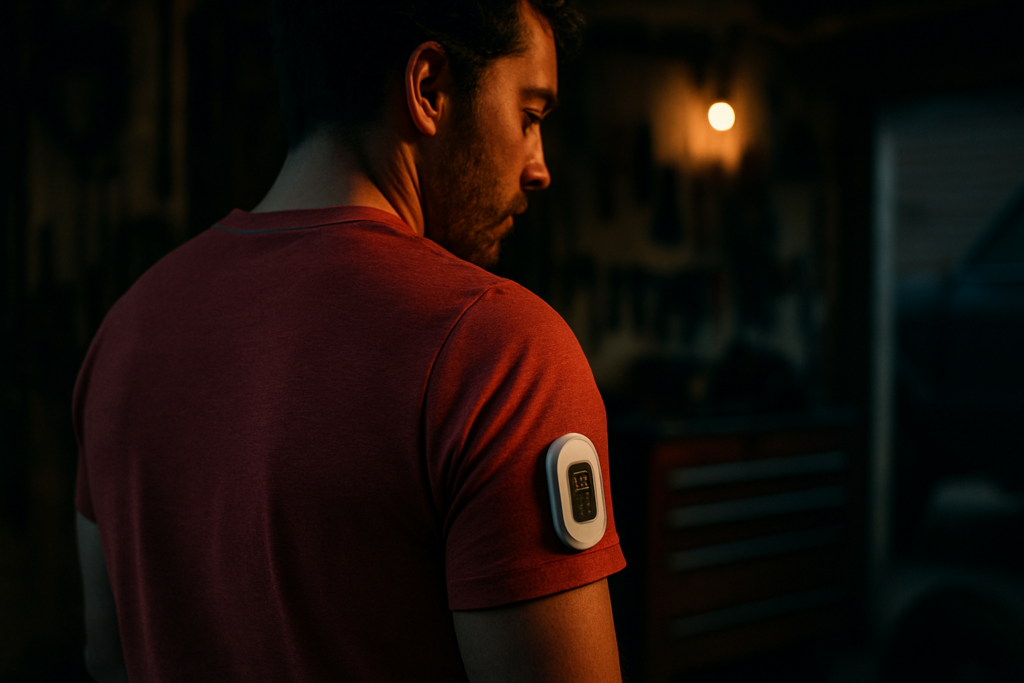Wearable tech has evolved from simple step counters to sophisticated gadgets that monitor our health, enhance productivity, and even entertain us. Every day, it seems like there’s a new device promising to revolutionize how we interact with the world. From smartwatches to fitness trackers, these innovations are seamlessly integrating into our daily lives.
As someone who’s always on the lookout for the latest tech trends, I find the rapid advancements in wearable technology truly fascinating. The market is booming, with companies constantly pushing the boundaries to offer more advanced features and better user experiences. Let’s dive into the exciting world of wearable tech and explore the innovations and trends shaping its future.
Overview of Wearable Tech
History and Evolution
Wearable technology’s journey started in the 1960s with the development of the first computer-powered wearables designed for military and healthcare purposes. In the 1980s, digital hearing aids and calculator watches entered the consumer market, setting the stage for future innovation. The early 2000s brought Bluetooth headsets and fitness trackers. The breakthrough came in 2015 when smartwatches, like the Apple Watch, gained mainstream popularity by integrating multiple functions into a single device. The focus of wearable tech shifted from novelty gadgets to essential tools for health monitoring, communication, and entertainment.
Key Components of Wearable Devices
Wearable devices comprise several essential components ensuring proper functionality and user experience:
- Sensors: Sensors (heart rate monitors, accelerometers) gather data on physical activity and health metrics.
- Processors: Processors (low-power chipsets) process collected data in real-time, ensuring efficient operation.
- Batteries: Rechargeable batteries power devices for extended periods, enhancing usability.
- Displays: Displays (AMOLED, LCD) present information clearly and are often touch-sensitive for interactive use.
- Connectivity Modules: Connectivity modules (Bluetooth, Wi-Fi) enable seamless connection with smartphones and other devices for data synchronization.
- Materials and Ergonomics: Durable, lightweight materials (silicone, stainless steel) ensure comfort during prolonged wear.
Enhancing user experience, these components drive the continuous evolution of wearable technology, marking significant strides in functionality and usability.
Innovations in Wearable Technology

Health Monitoring Advancements
Advancements in health monitoring have revolutionized wearable tech. Devices now include sensors to track heart rate, blood oxygen levels, and ECG. These features offer real-time health insights, proven crucial in early disease detection. The Apple Watch Series 6 and Fitbit Charge 5 exemplify devices with high-precision sensors for comprehensive health monitoring. These wearables also connect to health apps, providing users with detailed analytics and trends.
Fitness Tracking Breakthroughs
Breakthroughs in fitness tracking enhance users’ exercise routines. Wearables like Garmin Forerunner and Whoop Strap offer features like VO2 max estimation, sleep monitoring, and recovery advisories. These devices use advanced algorithms to provide personalized fitness insights, helping improve performance and prevent injuries. Wearables now integrate seamlessly with fitness apps, enabling users to set goals, track progress, and share achievements.
Fashion and Lifestyle Integration
Integration of fashion and lifestyle in wearable tech provides stylish, functional options. Brands like Fitbit Luxe and Garmin Lily combine aesthetic appeal with advanced features. These devices feature customizable bands, sleek designs, and adaptive displays. Luxury brands have also entered the wearable market, offering smart jewelry and high-end watches. Wearables now serve dual purposes, blending into daily attire while providing technological benefits.
Market Trends in Wearable Tech
Consumer Adoption Rates
- Skyrocketing Adoption: Consumer adoption rates for wearable tech have skyrocketed.
- Market Growth: Data from Statista shows the global market for wearable devices reached over $368 billion in 2021, with a steady growth rate of about 12.3% annually.
- Leading Devices: Fitness trackers and smartwatches lead the market, with models from brands like Apple, Garmin, and Fitbit showing strong sales.
- High Ownership: According to a survey by Pew Research, around 1 in 5 Americans now own a wearable device.
- Key Features: Much of this growth stems from features that sync with smartphones, provide health insights, and integrate with personal and professional lives.
Emerging Markets and Economies
- Significant Potential: Emerging markets and economies exhibit significant potential for wearable tech growth.
- Increased Adoption: Countries like China and India have seen substantial increases in wearable tech adoption.
- Rapid Growth: A report by IDC indicates the Asia-Pacific region excluding Japan will grow by 18.2% annually in wearable tech adoption.
- Affordable Devices: Affordable devices from local brands like Xiaomi and Realme contribute to this surge.
- Consumer Priorities: Consumers in these regions prioritize health monitoring and affordability, driving demand for cost-effective yet feature-rich wearables.
- Digital Infrastructure: Initiatives to improve digital infrastructure also support wearable tech’s integration into everyday life in these markets.
On Personal Health and Fitness
- Personal Health Impact: Wearable technology significantly influences personal health and fitness.
- Health Metrics Monitoring: Devices like smartwatches and fitness trackers monitor various health metrics, including heart rate, sleep quality, and daily steps.
- Growing Adoption: According to a report by IDC, the global shipment of wearable devices reached 396 million units in 2019, illustrating their growing adoption for health tracking.
- Real-Time Feedback: These devices provide real-time feedback, enabling users to make informed decisions about their health.
- Early Detection: Continuous heart rate monitoring helps users detect anomalies early, potentially preventing serious health issues.
- Sleep Insights: Sleep trackers offer insights into sleep patterns, helping users improve sleep quality by identifying disruptions.
- Motivation and Accountability: Wearable tech fosters motivation and accountability for fitness goals.
- Social Features: Apps linked to these gadgets often include social features, allowing users to share progress, compete with friends, and join fitness challenges.
- Healthier Lifestyle: This communal aspect boosts adherence to exercise routines and promotes a healthier lifestyle.
On Data Privacy and Security
- Privacy and Security Concerns: The rise of wearable technology brings data privacy and security concerns.
- Sensitive Health Data: As devices collect sensitive health data, the risk of unintended data exposure increases.
- Public Concern: A survey by Pew Research Center found that 72% of Americans express concerns over privacy, particularly regarding wearable tech.
- Data Protection: Companies must prioritize safeguarding user data by implementing strong encryption and secure data storage practices.
- Transparency: Users should have transparent access to data policies, knowing how their information is used and shared.
- GDPR Compliance: Legislation like the General Data Protection Regulation (GDPR) mandates strict data protection measures, ensuring companies handle data responsibly.
- Advancements in Privacy: Ongoing advancements in privacy settings allow users more control over their data.
- Customizable Controls: Device manufacturers now offer customizable privacy controls, enabling users to decide what data gets shared and with whom.
- User Trust: This shift towards user-centric privacy management addresses concerns, fostering trust in wearable technology.
Future of Wearable Tech
1. Predictions and Upcoming Technologies
Experts predict rapid growth in wearable tech, with innovations transforming health, wellness, and everyday convenience. Gartner forecasts that by 2022, over 520 million wearable devices will be in use globally, driven by advancements in smartwatches, fitness trackers, and autonomous wearables (e.g., smart clothing, and medical-grade devices). Devices will become more versatile, with capabilities extending beyond fitness tracking to areas such as mental health monitoring and chronic disease management.
Innovations in materials science will lead to more flexible, durable, and lightweight wearables, enhancing user comfort and device longevity. Emerging segments like bio-impedance sensors and hydration trackers will provide users with real-time insights into their physiological states. Tech giants, including Apple, Google, and Samsung, continue to pioneer innovations, pushing the envelope on what wearable tech can do.
2. The Role of AI and Machine Learning
AI and machine learning (ML) are pivotal in propelling wearable tech forward. Wearables equipped with AI can analyze vast amounts of data, offering personalized health insights and predictive analytics. For instance, AI algorithms in smartwatches and fitness trackers can detect irregular heart rhythms or predict potential health issues before they escalate.
Machine learning enhances user experience by enabling devices to adapt and learn from user behavior. For example, ML-powered wearables can optimize fitness plans based on progress and recommend personalized workout routines. Continuous advancements in AI and ML will ensure wearable devices become smarter, more intuitive, and indispensable in daily life.
Utilizing predictive modeling, AI helps medical professionals monitor patient health remotely, making real-time adjustments to treatment plans. This proactive approach predicts potential health crises, reducing the need for hospital visits and improving patient outcomes. AI and ML’s integration into wearable tech will revolutionize the way we engage with our health and wellness.
Conclusion
Wearable tech has undeniably transformed the way we approach personal health and fitness. With continuous advancements in health monitoring and AI integration these devices offer more than just convenience—they provide essential insights for better health management. As we move forward it’s crucial to stay informed about data privacy and the evolving landscape of wearable technology. The future holds exciting possibilities from innovative materials to enhanced AI capabilities promising even more personalized and effective health solutions.

 Jasmine Wellish is a key contributor at Info Wave Circle, known for her insightful articles and creative approach to technology and societal issues. With a deep passion for innovation and a knack for storytelling, Jasmine plays a crucial role in communicating the vision and achievements of Info Wave Circle to a broader audience.
Since joining the team, Jasmine has been instrumental in crafting compelling content that highlights the transformative potential of technology. Her work not only informs but also inspires the Info Wave Circle community and beyond. Jasmine’s dedication to exploring new ideas and her ability to convey complex concepts in an engaging manner make her an invaluable asset to the organization’s mission of fostering innovation and societal progress.
Jasmine Wellish is a key contributor at Info Wave Circle, known for her insightful articles and creative approach to technology and societal issues. With a deep passion for innovation and a knack for storytelling, Jasmine plays a crucial role in communicating the vision and achievements of Info Wave Circle to a broader audience.
Since joining the team, Jasmine has been instrumental in crafting compelling content that highlights the transformative potential of technology. Her work not only informs but also inspires the Info Wave Circle community and beyond. Jasmine’s dedication to exploring new ideas and her ability to convey complex concepts in an engaging manner make her an invaluable asset to the organization’s mission of fostering innovation and societal progress.
